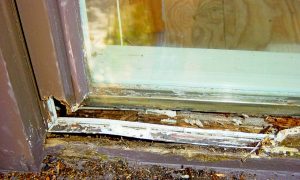03 Sep April 2011
Willis Sinclair Homes
“The Lowcountry’s Premier Custom Home Builder”

Something is rotten in …. South Carolina
Is something rotten at your house?
(Normally, we put a photo of our work here on the cover. Since we have
been addressing so many rot issues, it seemed important to use this photo.)
24 Gabriel Road
Lodge, South Carolina 29082
843 846 2500

April 2011
What do I do about rot?
If your home has a lot of wood on the exterior, you need to check it for rot. Look for soft places where rot often appears:
-
near the bottom of vertical boards,
-
at the ends of horizontal boards (such as window sills) or
-
the bottom corners of doors and windows.
If you find rot, you need to address it or the problem will get worse quickly.
Rot is a fungus and it will not just go away. As long as it has moisture and oxygen, it grows.
Rot is a major concern for home owners today especially in humid climates like the South Carolina Lowcountry.
If you prefer, we would be happy to check your house for rot. Some builders are not careful to use good rot preventative strategies. If we find rot, we will show you and suggest actions that you should take. No obligation on your part, of course.
How much does a poorly done roofing replacement (for example) cost?
-
The cost of the roofing job?
-
The cost of damages your home suffers as a result of a poor roofing job?
-
Both a) and b)
See next panel for the correct answer.
Don’t wait for rot to appear. It will only get worse and be more difficult to repair. If you have a home with a wooden exterior call us. We can help!
 From the desk
From the desk
of Willis Ponds …
When you have a contractor do work for you, do you wonder if you are getting your money’s worth?
One of our many services is monitoring contractors to make sure our clients get quality work done on time for a reasonable price.
Willis Sinclair Homes can help you locate reputable subcontractors for any work you may need done. We watch our subs closely and don’t hesitate to make them redo poorly done work. Our managers don’t accept poor workmanship and neither should you!
While we do charge for our services, consider how much poorly done jobs cost. We will be happy to provide a list of satisfied clients you can contact.
Call us. We would be happy to talk with you.
Willis
President
Willis Sinclair, Inc.
843 846 2500
The correct answer is c) the cost of the roofing replacement and the cost to repair damages caused by the faulty roof replacement. You will still need a new roof!
Willis Sinclair Homes
Rot: a serious problem in the South Carolina Lowcountry
Wood rot is nature’s way of converting trees and other wood back into nutrients for the soil. Unfortunately, nature does not differentiate between dead trees and your porch steps in this conversion process.
Severity of the Problem
A fact sheet from Ohio State University has a statistic which clearly illustrates the magnitude of rot problems. They claim that approximately 10% of our current wood production is used to repair rot damage! (ohioline.osu.edu/hyg-fact/3000/3300.html) Wood rot destroys about 20,000,000,000 1 board feet of timber in the United States annually.
Causes of Wood Rot
Wood rot is caused by moisture and oxygen. Wood usually will not rot when the moisture level in the wood is below 20%. Nor will it rot if there is no oxygen.
If you look at docks, you will see they rot at the waterline because at the waterline there is sufficient moisture and oxygen to feed the fungi that cause rot. You will see the same phenomena if you examine fence posts or even telephone poles. The end in the ground does not get enough oxygen to support the fungus growth. The end out of the ground is often not wet enough for fungus growth.
Rot Resistant Materials
On many homes, we see rotten cypress. Cypress is ‘supposed’ to be rot resistant. It turns out that old growth cypress is rot resistant, but much of the newer cypress is not very resistant at all. A key word to note is resistant as in rot resistant. Be sure to note the term, rot proof is not used to describe wood.
Pressure treated wood will typically last for many years before it rots, but eventually, it will rot under the right conditions.
About the only materials that will not rot are synthetic materials such as cement boards2 (for example, Hardie), PVC or other plastics3. Each of these materials has drawbacks that might not seem obvious at first glance.
Cement boards are very heavy and difficult to cut. They come in relatively short lengths (10 foot), so you wind up with many joints. Cement board is not structural, so its only application is trim or siding.
PVC trim boards look nice. They are free of knots and voids. Unfortunately, they have a high thermal coefficient meaning they expand and contract a lot when the temperature changes. Here in South Carolina, throughout the year, we see temperature swings of 80 or 90 degrees. When the temperature is cold, you will see open joints in PVC trim. When weather gets hot, the gaps will close and you may even see buckling.
Synthetic decking materials such as Trex seem like a good choice, but in our experience, they tend to mildew much faster than treated wood.
Given the current choices, pressure treated lumber seems to be the best choice for exterior use. Again, there are drawbacks. Stainless steel or ceramic coated fasteners must be used because new treatment processes required by the EPA are very corrosive.
Another drawback of using treated lumber is that often it is very wet and really should not be painted for several months. Unpainted treated lumber on your home is not very aesthetically pleasing as you wait for it to dry.
Treated wood is typically available only dressed (not rough sawn). Sometimes, a rough sawn finish is desired. Rough sawn treated wood is available, but it is typically a special order.
Clearly, in an existing home, the time to choose your building materials is past. There are things, however, that can be done on existing homes to delay rot problems.
Rot Delaying Strategies
Remember, moisture and oxygen are a welcome mat for fungi which cause rot so the key is keep water and/or air away from wood.
Keeping air away is difficult, so the best strategy is to keep materials protected from water.
Good paint is a very good step for keeping water off wood. Of course, the paint must be high quality. Keep in mind that stains often offer limited water protection, so think carefully before using stain on a home instead of paint.
In addition to excellent paint, you must have a good caulking job. Carefully painting the outside of your home is a hollow victory if there are paths for water to get behind siding or trim.
Caulk must be high quality and applied carefully. Flashing is another very important process to divert rain to the (painted) surface of trim and siding.
Back priming is another way to help prevent rot. This is simply painting each trim board with at least primer before installing it. This is a lot of work and will seldom be done unless you insist.
Treatment of Rot
Here in the hot, steamy Lowcountry, you will very likely have rot problems no matter what you do. They will be very minor if you are careful.
Rot needs to be removed and the rotten boards replaced with treated and back primed boards in many cases. In some cases, the rot cavities, once the rot is removed, can be filled with a plastic filler.
Keep in mind, rot will not go away nor will it get better. Nature is very effective at breaking down wood whether it is a tree in the forest or a board on your house.
You must take steps to remove and repair existing rot. Once you do that, you need to take steps to protect yourself from more rot.
Willis Sinclair Homes
Building, remodeling and repairing homes in the South Carolina Lowcountry for the best possible price.
843 846 2500
Call Willis Sinclair Homes, we can help. We will check your home and give you an honest report. No charge, of course.
1 20 billion – a big number, but about 1,000 less than the national debt.
2Such as Hardie Boards
3Such as Trex deck boards





No Comments